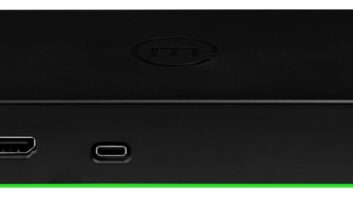Lower prices and new features will help broaden the appeal of handheld organizers to general consumers this year, say industry observers.
Handheld organizers remain the fastest growing segment of the PC market, expected to achieve 42% growth in U.S. unit sales for 1999 over 1998, or an annual compound growth rate of 29.2% from 1998 through 2002, according to International Data Corporation (IDC), Framingham, Mass.
Helping fuel sales are features such as color screens, which are now available on Windows CE palm-size PCs, and wireless capability. The former will make its debut during the second half of 1999, appearing in the popular Palm Computing format as the Palm VII with a less-than-$800 estimated street price.
Driving the market for home users will be the emergence of MP3-capable Win CE models, as well as the proliferation of lower-priced Palm-type organizers that use a proprietary operating system. Casio will ship a new color palm-size PC, model E-105, offering 32MB of RAM at an estimated street price of $599. The model comes with a $70 software bundle. Like the color E-100 – which offers 16MB of RAM and shipped at the end of April at a $499 street price – the E-105 offers 65,000 colors vs. the standard 256; a CompactFlash slot; sound recording and playback for MP3; and Audible.com. Both the units can play back movie trailers downloaded from the Internet as well as store still image files. A modem is not included in the estimated street prices for either unit.
As for the new wireless organizers, industry members say they should appeal to consumers once prices fall within the $399 to $499 range.
“Whoever is first with wireless is really going to hit a home run, and it looks like it’s 3Com so far,” said Ron Risman, a buyer for online retailer State Street Discount, Portsmouth, N.H. “Now the organizer becomes a pager and an e-mail device, and at that point, you really don’t need to travel with a notebook. You can send and retrieve anywhere, so it becomes an important tool for consumers once you get below $499.”
IDC analyst Jill House, however, said prices will have to fall in the $299 to $200 range for wireless products to appeal to holiday gift-givers and become a mass-market item.
In standard (non-wireless) Palm-type organizers, the recent drop in price is already driving sales to a new consumer demographic, vendors said. Both Casio and Royal said that Palm-type organizers with proprietary operating systems are far outselling expectations.
Casio president Gary Rado cited statistics from Port Washington, N.Y.-based research company ASW Intelect, which placed the Casio Personal Viewer models – carrying street prices ranging from $129 to $149 – as the number three and five best-selling organizers for December 1998. Casio has since expanded distribution across all channels, and it will offer a 2MB Pocket Viewer by June at a $99 estimated retail price.
Hewlett-Packard, which is heavily focused on enterprise sales, said it can no longer ignore the consumer market.
“We’re starting to head in that direction,” detailed Kevin Havre, HP’s technical marketing manager for North America. “For right now, I don’t think we’re going to be competing with $499 PDAs, but we’re not ruling it out, and things are changing.”
Perhaps the strongest push toward the consumer market comes from Handspring, a Palo Alto, Calif.-based company created in July 1998 by two former executives of Palm Computing: Jeff Hawkins, who was that company’s founder and chief technology officer, and Donna Dubinsky, Palm’s president.
A Handspring mission statement in October 1998 outlined its intent to offer products with interesting and unusual features. Ed Colligan, development and marketing VP (and former marketing VP for Palm Computing), said that while most handheld vendors target mobile professionals, Handspring’s audience will be “consumers more than the enterprise, and by that we mean people who spend their own money.” Handspring expects to release a consumer-priced version of the PalmPilot later this year. While some reports have suggested that the company will offer a unit in the $129 price range, Colligan said pricing has not been determined.
Philips is keeping up with the action through its Nino 500, a palm-size PC that shipped in April and comes with 16MB of RAM. The Nino 500 features sound capability for downloading “spoken word” documents and books from Audible.com, and it has an enhanced software bundle that includes the AvantGo offline web browser, bSquare business application, MobileSoft Expense Manager, Nino Voice voice-recognition software, and Calligrapher handwriting recognition. Estimated street price for the Nino 500 is $499. The modem is sold separately for $90.
In June, Psion is expected to ship the newest Series 5 version, called the 5mx. The unit offers double the memory of the previous model, with 16MB of RAM and 32MB of ROM, and is being positioned as a communications tool rather than an organizer. Psion upgraded its PsiWin software to version 2.3, which includes e-mail and web-browsing access directly in the interface. The unit will come with an optional modem, and new features include improved compatibility with Lotus and Microsoft Word. Estimated street price for the Series 5mx is $499.
This summer, industry leader 3Com is expected to ship the Palm VII organizer, which will allow wireless Internet access and two-way communication via a miniature two-way radio and antenna that is integrated into the unit, 3Com said. In addition, it will offer quick access to critical common applications such as flight schedules, news headlines, and online transactions such as stock trades. Internet access is expected to cost $10, with the price of the Palm VII estimated at less than $800.
Ericsson will ship in mid-1999 a clip-on organizer, called the Mobile Companion MC 218, for Ericsson GSM phones. Motorola just started shipping the StarTAC Mobile Organizer, street price $249, which works with a StarTAC cellphone allowing users online access and personal information management (PIM).













